Often, doctors prescribe medicines that must be taken at specific intervals throughout the day. Now you may ask if taking all your prescribed medicines at a particular time is important. Well, the answer is YES!
The first step in managing diabetes is taking all the prescribed medicines (both oral pills and insulin injections) on time and in the dosage recommended by your doctor. Missing doses of your medicines can lead to a spike in blood sugars which, if it happens frequently, can have harmful effects on important organs such as the kidneys, heart, nerves, eyes and brain.1
Let us look at some common reasons why people miss their diabetes medicines and simple hacks to overcome this situation –
1. Many patients assume that when their blood sugar reports are normal, they can stop their medicines.
> If your blood sugar levels become normal because of medicines, stopping them can spike your sugar level again. Do not stop or modify your medicine doses unless advised by a doctor.
2. Many patients don’t remember to take their medicines on time.
Well, in that case, why don’t you try these –
> Set reminders on your phone (they’re pretty helpful)
> Keep your pill box close, maybe on your dining table, so you don’t miss a dose after a meal.
> Inform your family members about your dosage schedule.
> Mention the date on the strip so that you can track your regularity by checking empty slots in the strip. You can also get a pill-box organiser and never miss a dose.
> Keep spare medicines in your handbag/wallet/car/office desk so you can have them even if you are out of your home.
> Keep a copy of your prescription while travelling away from home.
3. People also fear the side effects associated with medicines. 2
> Some people may experience a few side effects related to their diabetes medicines. It is important to always consult your doctor if you experience such side effects. He/She will either help you manage them or prescribe an alternative medicine. By no means you should ever stop your medicines without the advice of your doctor.
It is important to always remember that the positive health outcomes of taking your medicines regularly on time outweigh the mild side effects that you may experience.
4. Delay in purchasing your medicines can also cause a few days’ gaps.
> Always set reminders and buy your medicines at least 1 week before the current strip is finished.
5. Some patients cannot purchase all medicines because of financial constraints.3
> Taking medicines should be your priority to avoid far more expensive diabetes-related problems later. You can check for offers and buy medicines online. You can talk to your doctor about alternative brands that cost less.
It is worth noting that diabetes can be managed well with a healthy lifestyle, which includes taking your medicines on time, monitoring your sugar levels often, eating a balanced diet and regularly exercising.
We wish you good health.
References
Also Read: Are Bananas Good for Diabetics? A Research-Based Analysis
Disclaimer: The information included on this site is for educational purposes only and is not intended to be a substitute for medical treatment by a healthcare professional. Because of unique individual needs, the reader should consult their physician to determine the appropr
Type 2 Diabetes is one of the most common metabolic illnesses in the world. And there are ways you can live happily without allowing it to dictate your life. All you need is to know how to manage your blood sugar levels and take control of your health.
A crucial part of managing diabetes is getting some routine tests that can spot problems in their early stage to help prevent further complications. People who manage diabetes on their own by eating a healthy diet, living an active lifestyle and taking medicines as prescribed often have good control of their blood sugar levels. However, regular health checkups are needed. These visits give you an opportunity to:
Knowing FPG, PPG & HB A1C Numbers
Monitoring your blood sugar levels is an essential step in controlling diabetes. Make it a habit to collect your blood sugar reports after each test or make a diabetes care journal and write down your readings after every test. This will help you and your doctor understand whether your current treatment is working and if you need to make any tweaks.
Monitoring blood sugar and regular diabetes tests can also help to avoid long-term complications such as heart diseases, kidney ailments and stroke. In case you’re wondering how to ensure diabetes care, all you need to do is consult your doctor and develop a proper diabetes care plan that helps you bring your blood sugar level back to normal.
Also Read: 75 Soft Challenge: A Comprehensive Guide to Embrace the Lifestyle Change
Disclaimer: The information included on this site is for educational purposes only and is not intended to be a substitute for medical treatment by a healthcare professional. Because of unique individual needs, the reader should consult their physician to determine the appropriateness of the information for the reader’s situation.
Ref-
Type 1 diabetes is a chronic disease which is on the rise in India. Type 1 diabetes is an autoimmune condition caused by a deficiency of insulin and resultant high blood sugars. In the last 25 years, awareness and further studies about type 1 diabetes have revealed many aspects of the condition, such as its epidemiology, genetics, disease burden and immune and B-cell phenotypes.
Ongoing research on the part of the U.S Food and Drug Administration (FDA) recently (November 2022) ended with the medication Tzeild (teplizumab-mzwv), which is being said can help delay the onset of type 1 diabetes stage 3 in adults and in children 8 years and above who have been diagnosed with type 1 (stage 2). The approval of the medication in the form of an injection is significant because it provides a new treatment method for at-risk patients.
In this article, let us understand a little more about type 1 diabetes- its causes, symptoms, its stages and how to manage it.

There are four stages of Type 1 diabetes:
Genetic analysis helps identify underlying genotypes commonly associated with type 1 diabetes. As per research, a particular region called the HLA region on Chromosome Six is responsible for up to 50% of the risk of developing the condition. A close bloodline, such as a sibling or a relative with type 1 diabetes, can also put you at greater risk.
In this stage, one diabetes-related autoantibody is detected within the blood. Since diabetes is an autoimmune (a disease wherein the immune system of the body begins to attack its healthy cells) condition, autoantibodies, at this point, have already started attacking the beta cells within the pancreas.
At this stage, two or more autoantibodies related to diabetes are present in the blood. While beta cells continue to be attacked by the immune system, insulin deficiency leads to a blood sugar level rise as a result of glucose intolerance. Beta cell dysfunction is severe at this stage but still without symptoms.
In stage 3, there is a considerable loss of beta cells due to autoimmunity. Symptoms are visible, making it easier to diagnose type 1 diabetes. Some of these symptoms include:

Ø Blurry vision
Ø Excessive hunger
Ø Constant urge to urinate
Ø Severe fatigue
Ø Sudden and unexplained weight loss
The exact cause of type 1 diabetes remains unknown to doctors. Some possible reasons can include the following:
There is no cure for type 1 diabetes; however, it needs to be managed with the help of appropriate treatment, which includes dietary changes, medications, regular blood glucose monitoring at home and specific lifestyle changes:


As with all medications, there can be a few side effects with Tzield. These can include rash, headache and lowered levels of white blood cells.


Also Read: What Level of Blood Sugar is Dangerous? A Complete, Research-Based Guide
The right way to manage your diabetes is to reach out to your doctor, who will suggest a customised treatment plan based on your overall health, medical records and age. Depending on your diagnosis, your doctor may also recommend you to other specialists, such as a dietitian, an endocrinologist and a professional diabetes care and education specialist (CDCES). You must increase your awareness about your diagnosed condition and adhere strictly to whatever treatment plan chalked out for you by your doctor to lead a happy and normal life with your loved ones. The discovery and FDA approval of the drug, Tzeild, opens up a new door for at-risk patients and gives them more time to delay its onset.
Disclaimer: The information included on this site is for educational purposes only and is not intended to be a substitute for medical treatment by a healthcare professional. Because of unique individual needs, the reader should consult their physician to determine the appropriateness of the information for the reader’s situation.
“Movement is medicine” is a phrase that has been catching on a lot in recent times. Regardless of what the condition of your health is, it is likely that you will benefit from exercise. The best exercise for people with diabetes is primarily one that is easy to start, maintain and suits your health. For instance, if you’re just a beginner to exercise or fitness, start with something simple like walking, jogging, yoga and resistance band training. These require little to no equipment and can be done anywhere, making it easy to exercise consistently. Always choose the exercise based on your health- eg a person with underlying orthopaedic illnesses or heart disease may have certain restrictions to follow. Talk to your doctor and do it in the right way.
It is recommended that a person gets at least 150 minutes of exercise every week. Think of it as 25 minutes a day with a Sunday holiday. Because you need a day of rest and recovery. You can choose to change the number of days and the length of each session with time to suit you. The health benefits of walking for 30 – 40 minutes a day can have a positive impact on sugar levels and many more aspects of your well-being.1
Working out in the morning has the benefit of fulfilling that quota before anything else. Better weather and low crowds make the morning the best time to walk for diabetes, leaving you enough time to go about the rest of the day. It also offers the benefits of increased energy levels throughout the day and better sleep at night. Studies have also found that having a light meal ( eg. fresh fruit and some nuts ) before working out in the morning can be more effective for weight management.2
If you are not already used to exercising, it is best to start with easy, accessible workouts and work your way up once you are comfortable. Weight training vs cardio? Yoga vs. Running? The correct choice is what you enjoy doing most and something that suits your body. It is best to consult your doctor, physiotherapist or a certified trainer to understand the correct type and way of performing exercises.
Cardio exercises are anything that gets your heart rate up over a period of time and are some of the best exercises that can help you lose weight. Exercise for diabetes patients like walking, running, cycling, swimming and other aerobic exercises all provide the benefits of cardio exercise.
Functional Body Training is another form of cardio where you do exercises that work muscle groups in the body with an emphasis on functionality. What this means is that the exercises you do are focused on improving your ability to do regular, routine tasks. This kind of training improves your strength and balance in addition to your stamina and should be done under expert guidance.
Strength training has several benefits. If done correctly, 2 – 3 sessions of strength training every week is more than enough to take your fitness to the next level. Strength training can be done in a number of ways, the most popular of which is bodyweight training (pushups, squats, etc) and weight training for diabetes.
If you don’t like the idea of using weights, resistance bands are an amazing way to train strength. They are easy to carry and there are so many ways to use them. Both literally and figuratively, they are one of the most flexible exercise tools out there.
Flexibility elevates strength and endurance as well as improves balance. Stretching before a workout helps you avoid injury and improves the way your body moves. Over time, improved flexibility allows you to graduate with more difficult exercises. The importance of exercise and yoga lies in flexibility, balance and strength simultaneously.
In conclusion, weight training vs cardio for diabetes should ideally be thought of as weight training with cardio instead. Both are good forms of exercise that contribute meaningfully to our well-being.
A combination of aerobic exercises and strength training is considered optimal for adults with diabetes.3 It is also important to reduce your sedentary hours and avoid prolonged sitting. Try to take breaks for walking around and stretching every 30 minutes. Plan an exercise schedule that is sustainable and easy for you to follow every day. Yoga is also considered very helpful for people with diabetes.4 Overdoing any exercise is not recommended. If you notice any pain, discomfort or breathlessness after/during exercise/yoga, consult a doctor.
References
Disclaimer: The information included on this site is for educational purposes only and is not intended to be a substitute for medical treatment by a healthcare professional. Because of unique individual needs, the reader should consult their physician to determine the appropriateness of the information for the reader’s situation.
Diabetes is a rising health concern all over the world and in India, more than 77 million people live with either type 1 or type 2 diabetes every day. According to studies, it remains undetected in more than 57% of cases.
Diabetes has been termed as the ‘silent killer’ condition by medical experts but with a regulated lifestyle, and regular treatment you can stay fit and healthy. To do so, you need to eat healthy meals, exercise daily, quit smoking, sleep well, manage stress, maintain a healthy BMI (body mass index) and keep track of your blood sugar level with the help of a quality glucometer.
If you find it bewildering to choose a glucometer amongst the hundreds available in both online and offline shops, here is a concise list of some of the best and most affordable glucometers and glucometer strip refill boxes you can find in India that doctors recommend.
| PRODUCT NAME | CHECK PRICE |
| ACCU-CHEK ACTIVE GLUCOMETER KIT (WITH FREE 10 STRIPS) | BUY NOW |
| ACCU-CHEK ACTIVE GLUCOMETER TEST STRIPS BOX OF 50 | BUY NOW |
| DR MOREPEN GLUCO ONE BG 03 GLUCOMETER TEST STRIPS BOX OF 50 | BUY NOW |
| DR MOREPEN BG 03 GLUCOMETER KIT (WITH 25 STRIPS) | BUY NOW |
| ONE TOUCH SELECT PLUS GLUCOMETER TEST STRIPS BOX OF 25 | BUY NOW |
| DR MOREPEN BG 03 GLUCOMETER TEST STRIPS BOX OF 25 | BUY NOW |
| ONETOUCH SELECT PLUS SIMPLE GLUCOMETER WITH 10 FREE STRIPS | BUY NOW |
| CONTOUR PLUS GLUCOMETER TEST STRIPS BOX OF 50 | BUY NOW |
| ACCU-CHEK INSTANT GLUCOMETER TEST STRIPS BOX OF 50 | BUY NOW |
| CONTOUR PLUS ONE GLUCOMETER KIT (WITH FREE 25 STRIPS) | BUY NOW |
To get quick results within 4-5 seconds, choose Accu-Chek Active Glucometer that comes with 10 complimentary strips. This device needs to be used in combination with the Accu Check Active Strips to determine the glucose level in the blood approximately. It is a handy self-testing kit that you can easily use at home or even when you are travelling.
Benefits:
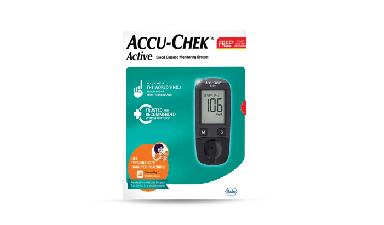
Get your blood glucose levels in seconds with the aid of the Accu-Chek Active Glucometer test strips box of 50. These strips need no manual coding and require only a small drop of blood. These strips are compliant for patients suffering from both type 1 and type 2 diabetes.
Benefits:
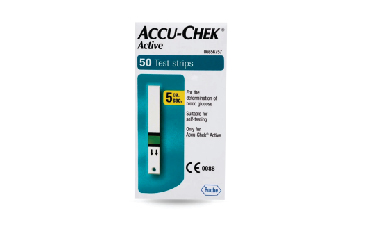
The Dr Morpen Gluco One Glucometer test strip box is based on electrochemical test strip technology. This is primarily intended for at-home use but you can also use it in the professional sphere. This when used in combination with Dr Morepen glucometer will read out your result in seconds, thus this is an ideal product for people with weak eyesight.
Benefits:
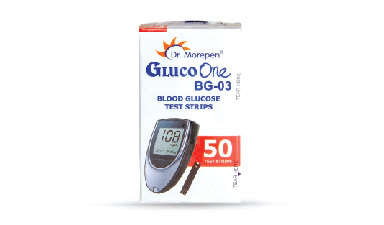
The Dr Morepen glucometer device is one of the most efficient machines in the market that gives you accurate results. It takes only 5 seconds to generate readings and can store up to 300 results.
Benefits
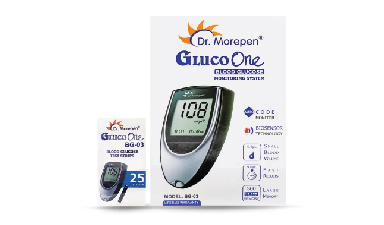
The One Touch Glucometer Test Strip box of 25 strips needs to be used along with the One Touch Select Plus Simple Blood Glucose Monitoring System. The test strips are highly reliable and give you accurate results.
Benefits:

Want a reliable brand to check your blood glucose levels daily? Then Dr Morepen BG 03 glucometer test box of 25 strips is the correct product for you. Reliable and fast, the test strips can be used at home as well as professionally in clinics.
Benefits:
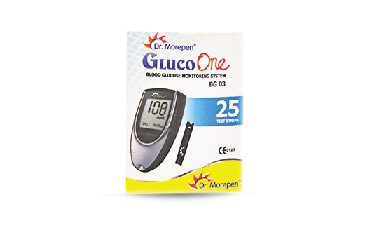
One Touch Select Plus Simple Glucometer as the name suggests is a device designed for simple use. It gives you accurate results with just a touch. Comes with a Delica Plus Lancing device system and free strips. The brand is among the most preferred ones by diabetologists in India.
Benefits:
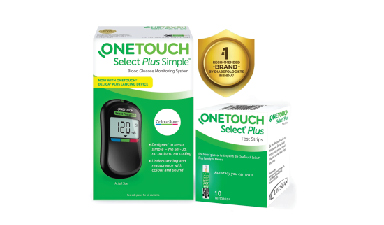
The Contour Plus Glucometer Test Strips need to be used in combination with the Contour Plus Glucometer. The box contains 50 strips, perfect for daily use by diabetic patients.
Benefits:

Are you a diabetic whose blood glucose levels vary greatly? Then the Acuu-Chek Instant Glucometer test strip box is the perfect blood sampling refill pack that provides you with instant readings. To be used in combination with Accu-Chek Active Glucometer, the product is simple to use and requires no manual instructions.
Benefits:

The Contour Plus One Glucometer Kit is a wireless device that can be Bluetooth-enabled. It helps to keep a check on your blood glucose levels daily and gives quick results.
Benefits:
References –
Diabetes is slowly evolving into a global pandemic. An increased prevalence of diabetes from 4% in 1995 to 5.4% by the year 2025 is estimated. Further, a prediction was made by WHO that the rise of diabetes cases will mainly be witnessed in developing countries. Insulin insufficiency (decreased insulin production) or insulin dysfunction (improper functioning of insulin) might be what leads to this complex disorder, i.e., diabetes. It is a disease in which multiple factors play a role and can lead to several complications, if left untreated. Therefore, the approach to treating it might also be multi-faceted. However, the choice of treatment is at the discretion of your doctor basis your appointment with them.1
If you have diabetes, you might experience the following symptoms:
Other symptoms that you might notice are:
Also Read: Paneer Dodi: Uses, Benefits, Side Effects, and More!
When we eat food, it gets broken down by the digestive system into its various nutrients. The carbohydrate that is present in food is broken down into glucose i.e., sugar, which requires assistance to reach its destination, i.e., the cells. A hormone called insulin (secreted by the pancreas) assists this glucose transport to cells and plays a key role in glucose absorption into the cells.2
In diabetes, the pancreas either does not produce enough insulin or the cells do not respond to the presence of insulin and cannot utilize it (Type 2 diabetes), or the pancreas does not produce insulin at all (Type 1 diabetes) . As a result, there is an increase in blood glucose levels, which is referred to as diabetes. However, different reasons can lead to the development of diabetes. Moreover, there are different types of diabetes as well.2
It is important to undergo foot examination, eye examination and perform kidney function tests at least every six months to one year for a diabetic patient (type 1 or type 2) as per international guideline recommendations as these are commonly involved organs which show complications as the disease progresses.
Dr. Ashish Bajaj, M.B.B.S., M.D. in Clinical Pharmacology and Toxicology
Also Read: Karela (Bitter Gourd): Uses, Benefits, Side Effects and More!
Nearly every one in ten people have diabetes in the U.S. and these numbers increase with age. Therefore, active research is being conducted in various parts of the world on treating diabetes, but there is a need for more research to reach any conclusion. However, based on the currently available data, the following remedies might be helpful for diabetes. Please make a note that diabetes is a serious condition and must be diagnosed and treated only by a medical doctor.
Stress might be the reason behind your rising blood sugar levels. Learning ways to manage stress might be of help in such conditions. Deep breathing, walking, meditation, working out, pursuing a hobby, gardening, and listening to your favourite music might be helpful to destress. Approaching a mental health counsellor and asking for help might also be a good first step towards coping with stress better. Therefore, you should discuss this with your doctor and reach a proper conclusion regarding methods of stress management.3
It is important to consult a doctor or nutritionist and decide on a suitable diet plan for your health needs. Your doctor might recommend that you eat foods that are rich in fibre, like whole grains, fruits, and vegetables etc. They might recommend to drink water instead of juices and soda. These carefully devised dietary changes, prescribed by your doctor, might prove to be helpful for diabetes.3
Your doctor might recommend that you stay active most of the days and exercise regularly to stay fit and active. This might be helpful to lose weight if you are overweight, maintain a healthy weight, and control blood sugar levels as well. You can start exercising by taking frequent and short walks during the day. Then, you can slightly ramp up your exercise routine by trying out various other forms of exercise like yoga, stretch bands, etc. However, you should consult a professional before deciding on and adapting to a new exercise routine.3
An animal study on rabbits found that dried onion powder might have a potential blood sugar-lowering activity (anti-hyperglycaemic). Another study on rats showed that a bioactive compound present in onion might have a blood glucose-lowering effect. In yet another study conducted on patients with diabetes, the blood sugar reducing the potential of onion juice was noted. However, more research is required to prove the effects of diabetes home remedies Ayurveda might have to offer. Kindly consult an Ayurvedic physician before using any herbal supplement or remedy.1
Bel, also known as Bengal quince or Bilva, is scientifically referred to as Aegle marmelos. It was seen in studies that the leaves of the bel tree might have the potential to lower the sugar, urea, and cholesterol of the blood. It might also help to stop the sudden rise of blood sugar that usually occurs after taking food. However, more studies are required to prove the effects of such a natural cure for diabetes. Please do not use it without consulting a doctor.1
Animal studies have shown that neem might help lower blood sugar. It might help increase glucose uptake by cells and deposition of glycogen (complex sugar-containing glucose) in rats. However, more human studies are required on the possible use of neem for diabetes. You should consult a doctor.1
Its scientific name is Acacia arabica. It is found commonly all over India in the wild. It might have an anti-diabetic effect by potentially helping the release of insulin hormone and lowering blood glucose levels. In animal studies, the seeds of babul were found to have the potential to decrease blood glucose levels by affecting the cells of the pancreas, which might help in insulin production. However, more studies are required to prove such claims; therefore, you should consult a doctor.1
Aloe vera is another such herb which might have the potential to aid in managing diabetes. Animal studies have shown that aloe vera might potentially decrease blood glucose and increase the capacity of cells to utilize glucose. It might also influence the secretion of insulin from the pancreatic cells. However, more research is required to prove the potential uses of aloe vera for diabetes. Therefore, please consult a doctor.1
Want to manage your diabetes effectively? Book your free diabetes consultation from our experts!
Though there are studies that show the benefits of the given herb and home remedies in diabetes, these are insufficient. There is a need for large-scale human studies to establish the true extent of the benefits of these home remedies on human health. Thus, these should only be taken with caution and never as a substitute for medical treatment.
Several medicinal plant have shown to be effective in different stages of diabetes, such as curcumin is proposed to be used as one of interventions in pre-diabetes therapy to prevent the progression of T2DM due to its proven benefits and safety profile,26 whereas, cinnamon can be a better option for diabetic patients who are having co-existing hypertension, and on the other hand, the extract of Aloe vera leaf gel with doses of demonstrated increased levels of insulin from regenerated pancreatic beta-cells.
Dr. M.G. Kartheeka, MBBS, MD(Pediatrics)
Also Read: Natural Home Remedies To Reduce Belly Fat
Suppose you have not been diagnosed with diabetes and notice the symptoms of diabetes such as frequent urination, increased thirst, etc., then you should visit a doctor and get a clear diagnosis. Your doctor will examine you thoroughly and reach a conclusion.
If you have already been diagnosed with diabetes, then you should visit a doctor if:
You must not rely on home remedies alone for the treatment of the condition and should consult a qualified doctor for any advice for the condition if the symptoms do not improve with home remedies.
Also Read: How to Reduce Blood Sugar Level Immediately: Proven Methods and Guidelines
Diabetes is a complex medical condition, and many factors might have a role in it. There are many factors that may affect the blood glucose level. It might occur due to the improper production or function of insulin, which is released from the pancreas. If you have diabetes, you might experience weakness, increased thirst, frequent urination, etc. Some home remedies that might help with diabetes are stress management, proper diet, onion, bel, etc. However, you should consult a doctor for proper diagnosis and treatment of diabetes. If you are a known diabetic, ensure that you regularly consult your doctor, especially when your glucose levels reach out of the target range.
Also Read: Natural Home Remedies For Good Sleep

No. Diabetes does not go away on its own. Please consult a doctor to receive a proper diagnosis and treatment plan for diabetes. Diet, exercise, and medicines form the keystones of managing and reversing diabetes.
Yes. Patients with diabetes can eat onions. In fact, it may also have the potential to decrease the blood glucose level.1 However, you should consult a doctor before using only such home remedies for high sugar.
If you have diabetes, you might experience frequent urination, increased thirst, slower healing of cuts and wounds, weakness, lethargy, yeast infection, etc. However, you should consult a doctor for proper diagnosis and treatment of diabetes.2
Yes. Your doctor might recommend that you exercise as one of the most important ways for lowering and managing blood sugar, along with making you fitter.3
Your doctor might recommend you include fruits and vegetables in your diet as they are rich in fibre. However, some fruits might be better to avoid. Therefore, kindly consult a doctor as to the fruits that can and cannot be consumed.3
Diabetes is a serious condition and must be diagnosed and treated by a doctor. However, some of the potential home remedies that might help with diabetes are onions, Bel, Neem, exercise, good food, stress management, etc. However, more research is required regarding the potential use of such natural remedies for diabetes. Kindly consult a doctor.
1. Modak M, Dixit P, Londhe J, Ghaskadbi S, Devasagayam TPA. Indian herbs and herbal drugs used for the treatment of diabetes. J Clin Biochem Nutr . 2007;40(3):163–73. Available from: https://www.ncbi.nlm.nih.gov/pmc/articles/PMC2275761/
2. Diabetes [Internet]. Cleaveland Clinic. [cited 2022 Jul 7]. Available from: https://my.clevelandclinic.org/health/diseases/7104-diabetes-mellitus-an-overview
3. NDEP. 4 Steps to Manage Your Diabetes for Life [Internet]. National Institutes of Health. [cited 2022 Jul 7]. Available from: http://ndep.nih.gov/publications/publicationdetail.aspx?pubid=4
Disclaimer: The information provided here is for educational/awareness purposes only and is not intended to be a substitute for medical treatment by a healthcare professional and should not be relied upon to diagnose or treat any medical condition. The reader should consult a registered medical practitioner to determine the appropriateness of the information and before consuming any medication. PharmEasy does not provide any guarantee or warranty (express or implied) regarding the accuracy, adequacy, completeness, legality, reliability or usefulness of the information; and disclaims any liability arising thereof.
Links and product recommendations in the information provided here are advertisements of third-party products available on the website. PharmEasy does not make any representation on the accuracy or suitability of such products/services. Advertisements do not influence the editorial decisions or content. The information in this blog is subject to change without notice. The authors and administrators reserve the right to modify, add, or remove content without notification. It is your responsibility to review this disclaimer regularly for any changes.
Often, doctors prescribe medicines that must be taken at specific intervals throughout the day. Now you may ask if taking all your prescribed medicines at a particular time is important. Well, the answer is YES!
The first step in managing diabetes is taking all the prescribed medicines (both oral pills and insulin injections) on time and in the dosage recommended by your doctor. Missing doses of your medicines can lead to a spike in blood sugars which, if it happens frequently, can have harmful effects on important organs such as the kidneys, heart, nerves, eyes and brain.1
Let us look at some common reasons why people miss their diabetes medicines and simple hacks to overcome this situation –
1. Many patients assume that when their blood sugar reports are normal, they can stop their medicines.
> If your blood sugar levels become normal because of medicines, stopping them can spike your sugar level again. Do not stop or modify your medicine doses unless advised by a doctor.
2. Many patients don’t remember to take their medicines on time.
Well, in that case, why don’t you try these –
> Set reminders on your phone (they’re pretty helpful)
> Keep your pill box close, maybe on your dining table, so you don’t miss a dose after a meal.
> Inform your family members about your dosage schedule.
> Mention the date on the strip so that you can track your regularity by checking empty slots in the strip. You can also get a pill-box organiser and never miss a dose.
> Keep spare medicines in your handbag/wallet/car/office desk so you can have them even if you are out of your home.
> Keep a copy of your prescription while travelling away from home.
3. People also fear the side effects associated with medicines. 2
> Some people may experience a few side effects related to their diabetes medicines. It is important to always consult your doctor if you experience such side effects. He/She will either help you manage them or prescribe an alternative medicine. By no means you should ever stop your medicines without the advice of your doctor.
It is important to always remember that the positive health outcomes of taking your medicines regularly on time outweigh the mild side effects that you may experience.
4. Delay in purchasing your medicines can also cause a few days’ gaps.
> Always set reminders and buy your medicines at least 1 week before the current strip is finished.
5. Some patients cannot purchase all medicines because of financial constraints.3
> Taking medicines should be your priority to avoid far more expensive diabetes-related problems later. You can check for offers and buy medicines online. You can talk to your doctor about alternative brands that cost less.
It is worth noting that diabetes can be managed well with a healthy lifestyle, which includes taking your medicines on time, monitoring your sugar levels often, eating a balanced diet and regularly exercising.
We wish you good health.
References
Disclaimer: The information included on this site is for educational purposes only and is not intended to be a substitute for medical treatment by a healthcare professional. Because of unique individual needs, the reader should consult their physician to determine the appropriateness of the information for the reader’s situation.
Throughout the world, yoga has become one of the most versatile forms of exercise. It improves your strength, flexibility, and mental health, to name a few of its benefits.1 Yoga has been the perfect way for individuals who are newly detected with diabetes as well as those living with it for a long time to help take control of their health. With a range of exercises that incorporate fresh beginners and scale up to the most seasoned practitioner, yoga is for everyone!
As an exercise, it can help control blood sugar and increase insulin sensitivity in the cells. Additionally, yoga also promotes better blood circulation and relieves stress, which is a crucial contributing factor to the symptoms of diabetes. It is also easy to start since there are plenty of online courses and guides on yoga asanas for diabetes.
How many yoga asanas are there to help manage diabetes? There are 84 recorded asanas and all of them play some part in improving your overall well-being and managing diabetes, such as:
1) Surya Namaskar
Also known as the sun salutation, Surya Namaskar is one of the most comprehensive movement exercises in the world. Doing this asana for 20 minutes elevates your heart rate and helps with weight loss, leading to lowered blood sugar and improved insulin sensitivity.2 It is one of the top 10 yoga poses for defeating diabetes because it improves the entire body in terms of strength and flexibility while improving blood circulation.
2) Viparita Karani
This is also called the legs-up-the-wall pose and is one of the most popular yoga asanas recommended for diabetes control. The reason is that it is simple, and doesn’t require anything but a wall. Viparita Karani asana improves your energy levels, relaxes the mind, aids digestion and improves blood circulation.
Like Surya Namaskar for diabetes, this asana improves a person’s overall health and holistically controls the symptoms of diabetes by making it easier for a person to manage their blood sugar.
3) Halasana
Halasana or the plough pose works multiple muscle groups in the body. The exercise strengthens your shoulders, hamstrings and spine.
If you can not do this asana right away, start with the supported shoulder stand, also known as Salamba Sarvangasana. Once you can maintain balance with the shoulder stand, you can gradually work on doing the full Halasana.
4) Ardha Matsyendrasana
This sitting posture is also called the sitting half spinal twist or the lord of the half-fish pose. It is a fairly simple asana but requires you to push yourself just a little bit. This asana works your spine, chest and hip, improving the strength and flexibility of these muscles. It can stimulate the organs in the abdomen and facilitate lowered blood sugar. An added benefit of this pose is that it can also improve your digestion.
5) Shavasana or Savasana
This asana is also called the corpse pose and is a practice of resting within your yoga practice. The asana emphasises rest and releases your body from the effects of stress, making it one of the top 10 yoga poses for defeating diabetes.3 The practice of stillness from the savasana pose helps reduce the tension and stress that normally builds up during a workout.
It is important to perform yoga in the correct way and the asanas that suit your individual health needs. Whether it is morning, evening or late at night, it is essential to practice consistently. Plan sessions to cover multiple asanas throughout the week and give yourself enough rest between sessions. You should always consult a yoga expert for better understanding and practice.
Disclaimer: The information included on this site is for educational purposes only and is not intended to be a substitute for medical treatment by a healthcare professional. Because of unique individual needs, the reader should consult their physician to determine the appropriateness of the information for the reader’s situation.
Ref
1 https://pubmed.ncbi.nlm.nih.gov/16519085/
2 https://www.ncbi.nlm.nih.gov/pmc/articles/PMC6145966/
3https://www.ncbi.nlm.nih.gov/pmc/articles/PMC4437062/
Type 2 Diabetes and obesity are two closely related conditions. Obesity significantly increases the risk of type 2 diabetes and in cases where people have been able to achieve significant weight loss, their blood sugar control has been commendable/excellent.
Here are some frequently asked questions on diabetes and obesity in India.
Q 1. I was always thin, all of sudden am I putting on weight?
Your body’s metabolism slows down with age, making it harder to stay thin as you grow older. Also, sedentary lifestyles with limited physical activity make even the thinnest of people put on weight at a surprising pace. The key lies in the lifestyle choices you make, so examining them will shed some light on your weight gain. If you are eating right, getting enough exercise and still gaining weight, you should consult a doctor as sudden unexplained weight gain can be due to thyroid disorder, hormonal derangements or as an adverse effect of an ongoing medicine.
Q 2. I do physical exercise and eat on time but I am not losing weight?
The weighing scale doesn’t always tell you if your exercise and diet are working. Measure your waistline and see if you look leaner or if your clothes have become looser than before. In many cases, exercise makes people heavier due to increased muscle mass. Look more closely at the kind of exercise you are doing and the things you are eating. It may help to consult a nutritionist or trainer about moving forward. If it still doesn’t make sense, consult a doctor for a medical opinion.
Q 3. Does stress make you put on weight?
Research on diabetes and obesity has indicated that stress can make you put on weight faster. Stress causes the hormone cortisol to be released into the body and too much of it can make you hungry and lead to what is known as ”Stress eating”. Studies have also indicated that stress slows down metabolism, making it a two-pronged attack that packs on the pounds. Diabetes, obesity and metabolism are all closely related to stress, therefore, good mental health is as important to combat obesity and diabetes as healthy habits like exercise and diet.
Q 4. Is the fat around my stomach bad for my health?
Belly fat and diabetes are closely related since belly fat is an indication of visceral fat or fat around important organs, which can be harmful. If your waistline is above 35 inches as a woman or 40 inches as a man, you are likely to have significant amounts of visceral fat, which is associated with a number of health complications. A healthy, balanced diet along with regular exercise can help you lose belly fat.
Weight loss (for people who are overweight/obese) can be one of the most effective ways of reducing your chances of getting diabetes-related complications and ensuring your blood sugar stays in control. It is important to prioritize your health and maintain good, healthy habits, and timely medications. Consult a nutritionist to help you with weight loss and reach out to your doctor for any questions.
Disclaimer: The information included on this site is for educational purposes only and is not intended to be a substitute for medical treatment by a healthcare professional. Because of unique individual needs, the reader should consult their physician to determine the appropriateness of the information for the reader’s situation.
Type 2 Diabetes is one of the most common metabolic illnesses in the world. And there are ways you can live happily without allowing it to dictate your life. All you need is to know how to manage your blood sugar levels and take control of your health.
A crucial part of managing diabetes is getting some routine tests that can spot problems in their early stage to help prevent further complications. People who manage diabetes on their own by eating a healthy diet, living an active lifestyle and taking medicines as prescribed often have good control of their blood sugar levels. However, regular health checkups are needed. These visits give you an opportunity to:
Knowing FPG, PPG & HB A1C Numbers
Monitoring your blood sugar levels is an essential step in controlling diabetes. Make it a habit to collect your blood sugar reports after each test or make a diabetes care journal and write down your readings after every test. This will help you and your doctor understand whether your current treatment is working and if you need to make any tweaks.
Monitoring blood sugar and regular diabetes tests can also help to avoid long-term complications such as heart diseases, kidney ailments and stroke. In case you’re wondering how to ensure diabetes care, all you need to do is consult your doctor and develop a proper diabetes care plan that helps you bring your blood sugar level back to normal.
Disclaimer: The information included on this site is for educational purposes only and is not intended to be a substitute for medical treatment by a healthcare professional. Because of unique individual needs, the reader should consult their physician to determine the appropriateness of the information for the reader’s situation.
Ref-